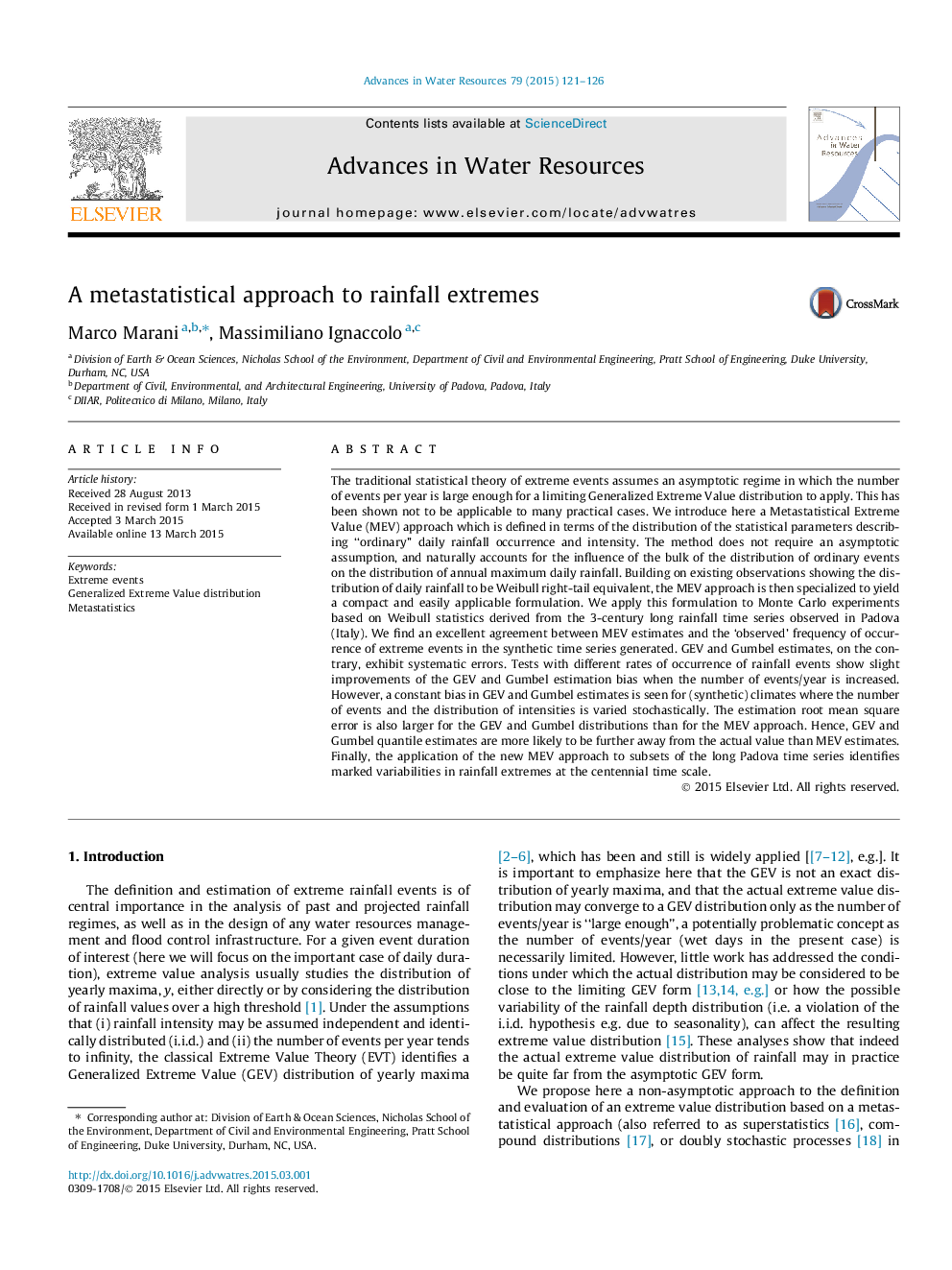| Article ID | Journal | Published Year | Pages | File Type |
|---|---|---|---|---|
| 4525438 | Advances in Water Resources | 2015 | 6 Pages |
•We introduce a metastatistical approach to define extreme rainfall distributions.•The proposed method does not require the # of events/year → infinity as the GEV distribution.•The method outperforms the GEV distribution in terms of mean- and root mean-square error.
The traditional statistical theory of extreme events assumes an asymptotic regime in which the number of events per year is large enough for a limiting Generalized Extreme Value distribution to apply. This has been shown not to be applicable to many practical cases. We introduce here a Metastatistical Extreme Value (MEV) approach which is defined in terms of the distribution of the statistical parameters describing “ordinary” daily rainfall occurrence and intensity. The method does not require an asymptotic assumption, and naturally accounts for the influence of the bulk of the distribution of ordinary events on the distribution of annual maximum daily rainfall. Building on existing observations showing the distribution of daily rainfall to be Weibull right-tail equivalent, the MEV approach is then specialized to yield a compact and easily applicable formulation. We apply this formulation to Monte Carlo experiments based on Weibull statistics derived from the 3-century long rainfall time series observed in Padova (Italy). We find an excellent agreement between MEV estimates and the ‘observed’ frequency of occurrence of extreme events in the synthetic time series generated. GEV and Gumbel estimates, on the contrary, exhibit systematic errors. Tests with different rates of occurrence of rainfall events show slight improvements of the GEV and Gumbel estimation bias when the number of events/year is increased. However, a constant bias in GEV and Gumbel estimates is seen for (synthetic) climates where the number of events and the distribution of intensities is varied stochastically. The estimation root mean square error is also larger for the GEV and Gumbel distributions than for the MEV approach. Hence, GEV and Gumbel quantile estimates are more likely to be further away from the actual value than MEV estimates. Finally, the application of the new MEV approach to subsets of the long Padova time series identifies marked variabilities in rainfall extremes at the centennial time scale.
